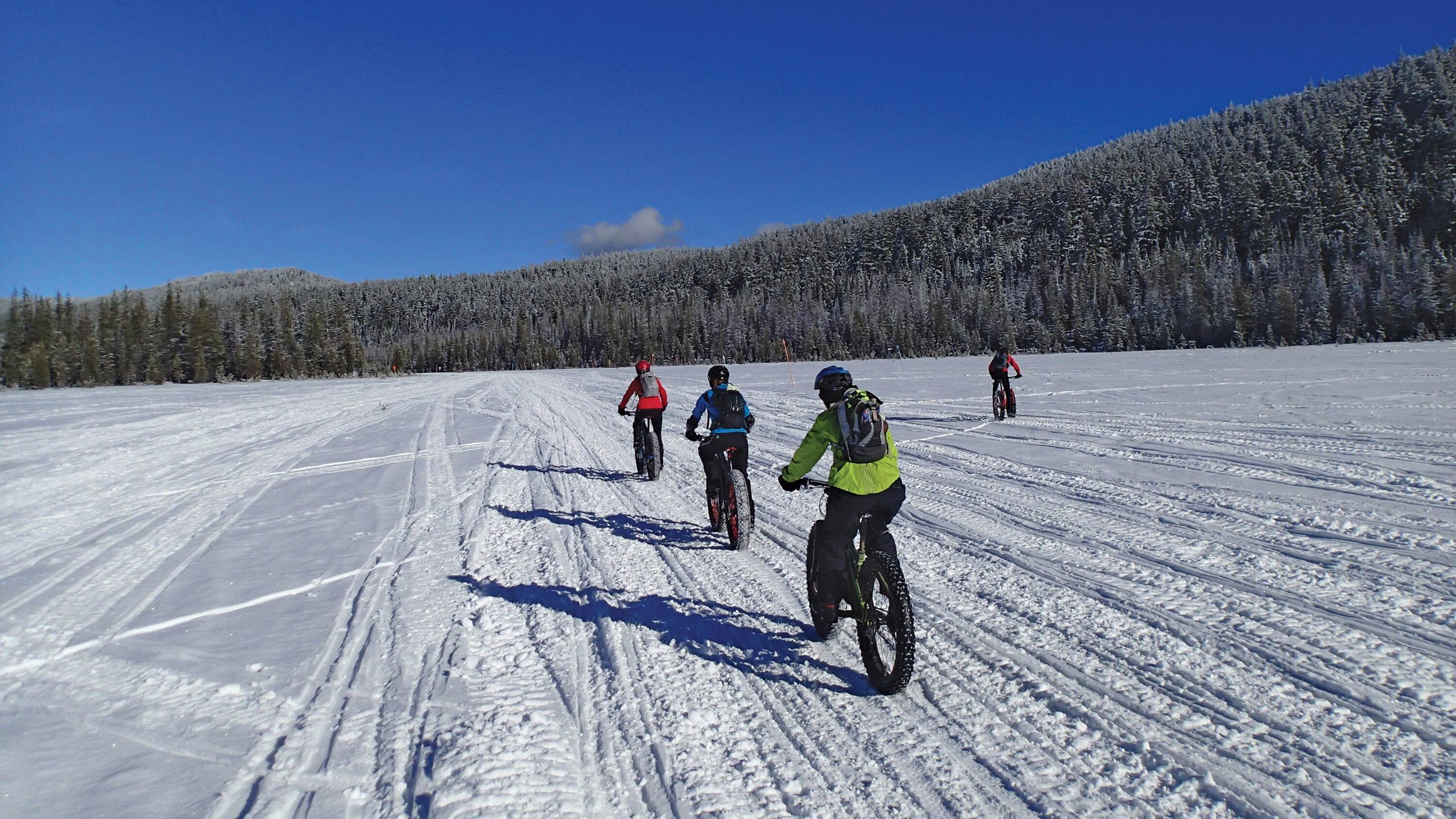Gary Meyer remembers a time when only hardcore mountain bikers would venture onto snowy trails. It wasn't that long ago.
"When I got my first fat bike in 2011, there were probably five to 10 [riders] in Bend with fat bikes," says Meyer, the winter trail coordinator for the Central Oregon Trail Alliance. Since then, fat bikes—off-road bikes with hefty frames and extra-thick tires—have seen a dramatic spike in popularity. Their wide wheels make it possible to glide over would-be treacherous terrain, including snow. "It's gone from being able to know everyone that has a fat bike and rides in the winter to, there's no way I can keeps tabs as to how many there are. It's exploded."
Snow biking has long been popular in the Midwest and Alaska, but it's relatively new to the West Coast. Bend has become a hotbed for the sport, in part thanks to Meyer. Each winter since 2014, he carves miles of twisty trails into the snow of Bend's Wanoga Park with a snowmobile outfitted with a metal roller. Last year, Meyer's trails surpassed their trial period and were adopted into the Forest Service's official trail inventory.
"It's just so totally different from riding trails," he says. "And then it's just—you're riding in the snow. It's a completely foreign environment, and I just love it."

Biking on a slick surface in the middle of nowhere and in adverse weather conditions can seem daunting, so WW asked Meyer for his tips to getting started.
Understanding snow conditions is key.
Like skiing, snow texture is the difference between a good day and a bad one. "What makes [snow biking] a challenge is conditions," says Meyer. "They can vary so much from day to day and hour to hour when you're out riding." If the snow's icy crust melts, you won't be able to glide along the top. If a storm blows in and lays down a layer of fresh, pillowy snow, you'll have a hard time plowing through it. Meyer says that he usually makes sure the temperature is below freezing for most of the previous night before heading out. Bend Trails posts frequent trail condition updates on its website, and Central Oregon Fat Bike's page is also an active resource for bikers who want to check in. "You really have to pay attention to your conditions when you're going on a longer ride to make sure you're not walking back," says Meyer.

Low tire pressure is crucial.
Meyer recommends riding with tires that have an air pressure of 4 pounds per square inch, which is inordinately low—most mountain bike tires have a PSI of 20 to 30, and road bike tires are normally inflated to the 70-to-90 range. According to Meyer, bike shops frequently rent fat bikes with a higher PSI, so if you're renting, check with the shop that your tire pressure is low. "What you're trying to do is have your tire have as big a surface area on that snow as possible," says Meyer. "Riding in the snow, it's about pedaling smoothly and low tire pressure just to float over the snow."
Snowmobile trails are just as good as snow bike trails.
It's not legal to bike on snowmobile trails everywhere in Oregon, but in the Deschutes National Forest, any trail that's open to snowmobiles is also open to fat bikes. Snowmobile trails are less windy and wider than snow bike trails—15 to 20 feet across compared to 2. "It's not twisty, turny, mountain bike-type fun," says Meyer. But the extra clearance can be comforting for beginners. On weekdays, the trails are almost totally empty.

You might get stuck in a tree well, but you probably won't get a concussion.
Snow bikers face plenty of challenges that dirt bikes don't. Along with changing conditions, riders should always come prepared with tools to start a fire, extra food, a plan to get off the trail in case of emergency and extra clothing layers—changing out a busted tire tube is a lot more treacherous when hypothermia is a risk. Meyer does his best to groom paths far enough away from trees to prevent bikers from falling into wells, but if you venture off the path, tree wells become a concern. Crashing in snow, however, is a lot more pleasant than crashing on dirt. "You get these fantastic wipeouts, and they don't hurt because you go in the snow," says Meyer. "The hardest part is just getting yourself up out of the hole you dug, but generally, you don't get hurt."
Your Guide to Making the Most of Winter in Portland
A Guide to Snowshoeing on Mount Hood
When Oregon's Ski Resorts Start Feeling Claustrophobic, Blaze a Trail to the Backcountry
Yes, it Is Possible to Bike Through Snow. Here's How.
Snowvana Brings One of Oregon's Most Daring Freeskiers Home
From Trikking to Snow Kiting, Here are Some of Oregon's More Obscure Winter Sports
Five Great Hikes to Watch the Oregon Coast Get Battered This Winter
We Went Pub Crawling on the Mount Hood Express to Find the Best Bars on the Way Down From Timberline

